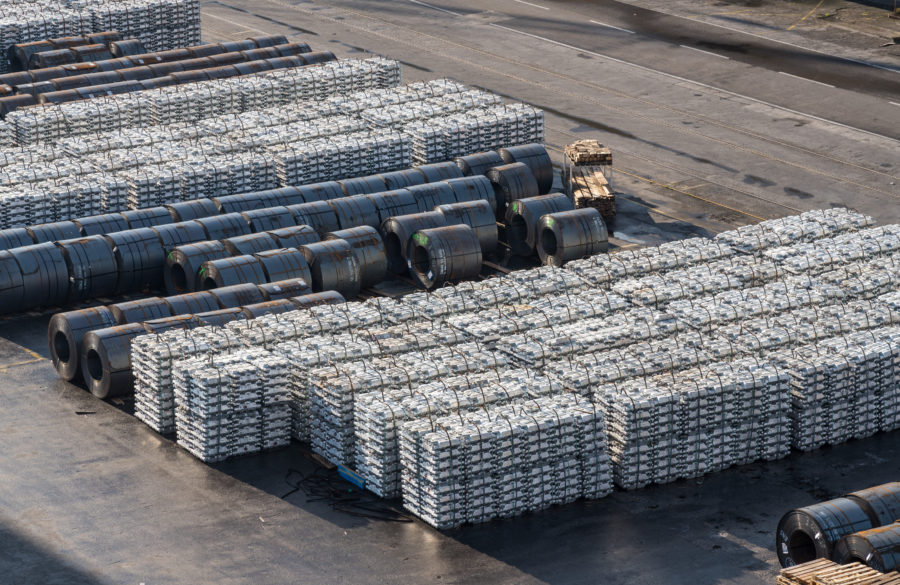How Canada’s mining sector impacts the economy
Canada is a mining nation.
From the Rockies to the Canadian Shield, and from the Plains and to the North, the variety of geology that exists in the country is immense – and this has created a large and unique opportunity for ground-breaking mineral discoveries.
As a result, Canada is one of the world’s largest exporters of minerals and metals, supplying approximately 60 different mineral commodities to over 100 countries.
An intro to Canadian mining
Today’s infographic comes to us from Natural Resources Canada and it highlights an industry that has given Canada a competitive advantage in the global economy.
The mineral sector brings jobs, investment, and business to Canada.
This impact stems from the whole lifecycle of mining, including exploration, extraction, primary processing, design, and manufacturing processes.
Economic impact
Last year, the minerals sector contributed $72 billion to Canada’s GDP.
Here are the major minerals produced in Canada in 2017, along with their dollar value:
| Rank | Mineral | Value (2017) | Production (2017) |
| #1 | Gold | $8,700,000,000 | 164,313 kg |
| #2 | Coal | $6,200,000,000 | 59,893,000 tonnes |
| #3 | Copper | $4,700,000,000 | 584,000 tonnes |
| #4 | Potash | $4,600,000,000 | 12,214,000 tonnes |
| #5 | Iron Ore | $3,800,000,000 | 49,009,000 tonnes |
| #6 | Nickel | $2,700,000,000 | 201,000 tonnes |
| #7 | Diamonds | $2,600,000,000 | 22,724,000 karats |
According to S&P Global Market Intelligence, more non-ferrous mineral exploration dollars come to Canada than to any other country. In 2017, roughly $1.1 billion – or about 14% of global exploration spending – was allocated to Canada, which edged out Australia for the top spot globally.
Mining and communities
From mining in remote communities to the legal and financial activities in urban centers such as Vancouver or Toronto, mining touches all Canadian communities.
According to a study commissioned by the Ontario Mining Association, the economic impact of one new gold mine in Ontario can create ~4,000 jobs during construction and production, and can contribute $38 to $43 million to the economy once operating.
Further, more than 16,500 Indigenous peoples were employed in the mineral sector in 2016, accounting for 11.6% of the mining industry labor force, making it the second largest private sector employee.
Innovation drives Canadian mining
Canada has an established network of academic thinkers, business associations, financial capital, and government programs that support and promote new technologies that can help set a standard for mining worldwide.
Here are a few examples of innovation at work:
- CanmetMINING is currently researching the implementation of hydrogen power to replace the use of diesel fuel in operating underground mines. Once this technology adopted, it could reduce the GHG emission footprint of underground mines by 25% and improve the health of workers in mines by reducing their exposure to diesel exhaust.
- New technology is turning what was once mine waste into a potential source for minerals. In the past three decades, six billion tonnes of mine tailings have accumulated with a potential value of US$10 billion. Reprocessing this waste can produce significant recoveries of rare earth elements, gold, nickel, cobalt and other valuable minerals.
- Artificial intelligence and new remote-control technology can be deployed to operate mining equipment and find new discoveries.
All these innovations are going to change the nature of working in mines, while creating high-paid jobs and demand for an educated labor force.
Opportunity for future generations
A large number of Canadian miners are expected to retire over the next decade. In fact, Canada’s Mining Industry Human Resources Council (MiHR) forecasts 87,830 workers at a minimum will have to be hired over the next ten years.
With game-changing technologies on the horizon, there will be plenty of opportunities for a new generation of high-tech miners. The future bodes well for Canadian mining.
(By Nicholas LePan)
More News
China’s mining investment under Belt and Road Initiative sets new record – report
China's overseas mining investment under its Belt and Road Initiative hit another peak last year at $21.4 billion.
March 29, 2025 | 10:26 pm
Column: Europe’s future metals strategy hindered by current crisis
Chinese over-capacity and high energy prices have accelerated the long-term decline of European steel and aluminum production.
March 29, 2025 | 02:25 pm
{{ commodity.name }}
{{ post.title }}
{{ post.excerpt }}
{{ post.date }}




Comments